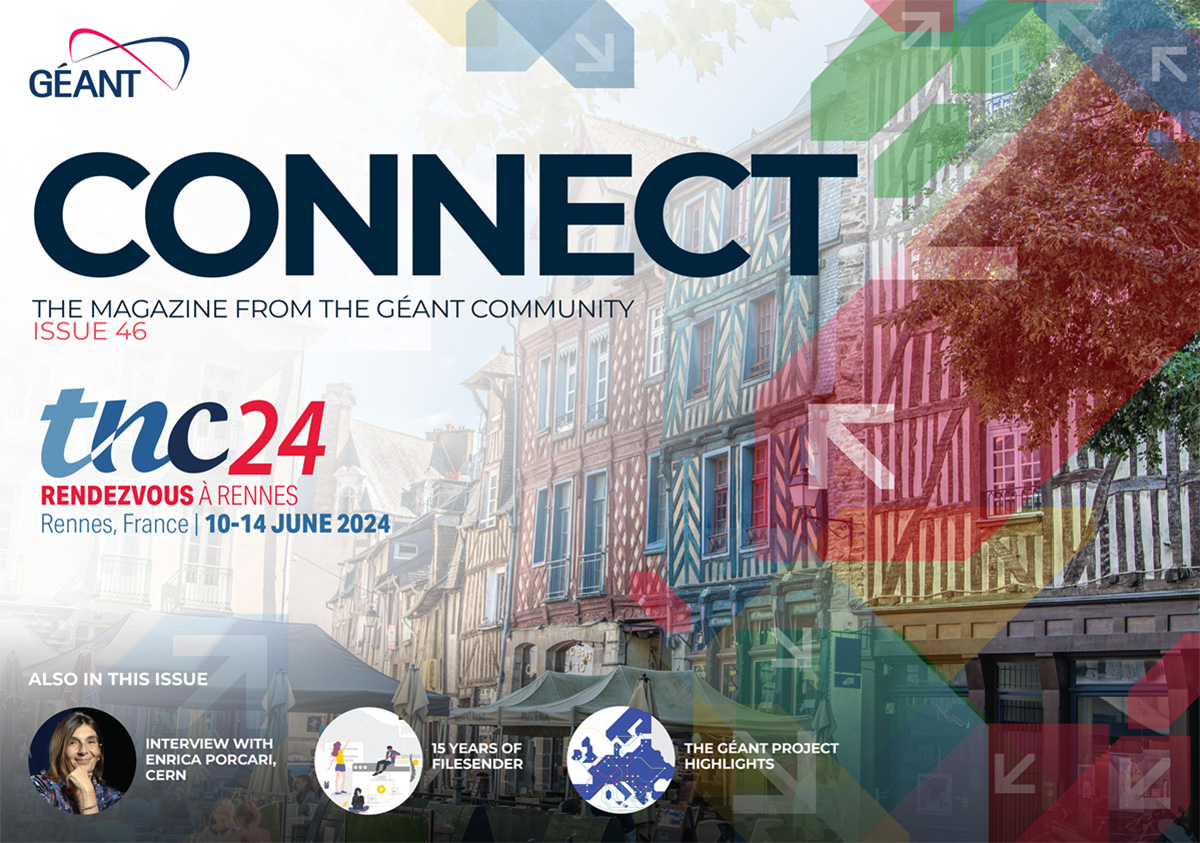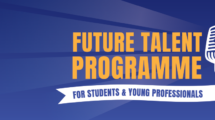Dr Nataliya Kosmyna from Massachusetts Institute of Technology (MIT) closes the TNC24 plenary programme with her keynote “STEMAI: The Future of Computing”. Passionate about an idea of creating a partnership between Artificial Intelligence (AI) and human intelligence, for the past 14 years she has been working on designing solutions to control drones, robots and home appliances using brain activity only. Nataliya has already won multiple awards for her work and was also named as one of the 10 Top French Talent 2017 from MIT Innovators Under 35.
Nataliya, thank you for closing TNC24 with your keynote, we are so excited to welcome you in Rennes. What inspired your interest in brain-computer interfaces (BCI) and led you to pursue research in this field?
My interest in brain-computer interfaces (BCIs) actually began when I was quite young. As a child, I watched the movie “Johnny Mnemonic,” where Keanu Reeves plays a courier with a data storage device implanted in his head that allows him to carry large amounts of information that is too sensitive to upload into cyberspace. The idea of merging the human brain with technology started to fascinate me then. “The Matrix” is another movie that really made an impact on me, I think I must have watched it over 17 times! The ability to upload and download data from the brain inspired my studies.
I have always been exposed to brain knowledge as my mother is a neurologist, so I think that this might have further fuelled my curiosity of our incredible vital organ. However, I was not interested in taking the traditional medical route, so I studied Computer Science and interned in BCI research. Eventually, I pursued my Ph.D. in BCI at Université Grenoble-Alpes in France.
My research projects often draw inspiration from science fiction, which has played a significant role in shaping my work. For instance, the project for the ‘thinking hat’ is reminiscent of the magical sorting hat from Harry Potter. This hat incorporates brain sensing technology to enhance a child’s mindset. By translating brain science into fictional form factors, we think outside the box and explore innovative solutions. In summary, my journey has been driven by a desire to solve real-world problems using BCIs, rather than creating technology for its own sake.
Your work sounds both visionary and practical. Can you explain what “neuroadaptive technology” entails, and how it differs from traditional BCI approaches? Could you also share any recent breakthroughs or research findings that have excited you?
Neuroadaptive technology refers to systems that actively adapt to an individual’s brain and behaviour. Unlike traditional BCIs, which often follow predefined commands, neuroadaptive systems dynamically respond to the user’s needs. Let me illustrate this with some examples.
- Closed-Loop Systems – Imagine driving while feeling tired, a neuroadaptive system would detect your fatigue through brain signals and respond accordingly. It might send alerts, play sounds, or even stimulate you to wake up. If necessary, it could take control of the car and guide it safely to the side of the road. This closed-loop approach ensures real-time adjustments based on your brain’s state.
- Brain Switch for Paralysed Patients – We also work with fully paralysed patients. Using an app-based system, they can send basic mental commands, which are then transformed into simple actions. For instance, a patient could mentally instruct a robotic arm to pick up an object. This brain switch technology empowers individuals who cannot use traditional interfaces due to physical limitations.
- Apple Vision Pro – This project involves an augmented reality headset called Apple Vision Pro. It receives brain signals via a headband and augments the user’s reality based on their cognitive state. Imagine receiving context-aware information or assistance seamlessly as you go about your day.
These neuroadaptive technologies hold immense promise for enhancing human performance, attention, and focus. They bridge the gap between our brains and the digital world, opening up exciting possibilities.
What ethical considerations do you believe are most important to address in the development and implementation of BCI and neuroadaptive technology?
There is obviously a dark side to the use of any technology, BCI is particularly critical: it’s about the brain, the final frontier. Relevant legislation is crucial and must be put in place before the ‘genie gets out of the bottle’.
Let me expand further on this. Such cutting-edge technology offers immense potential, but it also comes with risks, so here are some critical considerations.
- Privacy and Consent – BCIs directly interface with our brains, raising privacy concerns. How do we ensure that users have control over their neural data? Informed consent becomes paramount.
- Safety and Responsibility – BCIs must be safe and reliable, developers need to be accountable for unintended consequences. Responsible innovation is essential.
- Equity and Accessibility – Ensuring equitable access to BCIs regardless of socioeconomic status or geographical location is vital.
- Stigma and Perception – Addressing stigma associated with BCIs—whether as assistive devices or enhancements—is essential for societal acceptance.
- Legislation and Regulation – This fast-developing field needs a solid governance framework, imagine that if combined with artificial intelligence, it could enable developers to abuse cognitive biases and trigger reactions and emotions without consent. I am a member of the UNESCO Committee on Ethics of Neurotechnology which looks at the development of sound and ethical regulation in the field of neurotechnology at the international level. I agree with Gabriela Ramos, Assistant Director-General for Social and Human Sciences of UNESCO who says: “This is not a technological debate, but a societal one that needs to be tackled now!”
In your mid-30s, you have already gained international recognition for your multi-award-winning work. Could you share with our readers what’s ‘around the corner’ for Nataliya Kosmyna?
I believe that the impact of my work extends beyond accolades. It’s about the people and the community we serve. Whether addressing medical challenges, assisting non-verbal individuals, or supporting astronauts, my work remains human-centric. I work with the brain, the brain is not in a vacuum, it’s the human being. Certainly, my ambition—to enable brain upload and download—is visionary, unlocking the brain’s power is essential for AI. As my research strives to make this a reality, humanity remains at the heart of our mission. It takes a village—a dedicated team—to turn dreams into transformative solutions.
Did you know? The power of 24 supercomputers in the world cannot reproduce ten minutes of complex brain activity of a mouse. How’s that for complexity?
Find out more: Dr Kosmyna’s work pushes boundaries, her projects demonstrate the practical applications of neuroadaptive technology and its potential impact on various aspects of our lives. To learn more about her groundbreaking work at MIT, where she continues to innovate and explore novel hardware solutions for different applications, visit:
- media.mit.edu/projects/avp-eeg/overview
- media.mit.edu/projects/thinking-cap/overview
- media.mit.edu/projects/ddog/overview

Read or download the full magazine here







